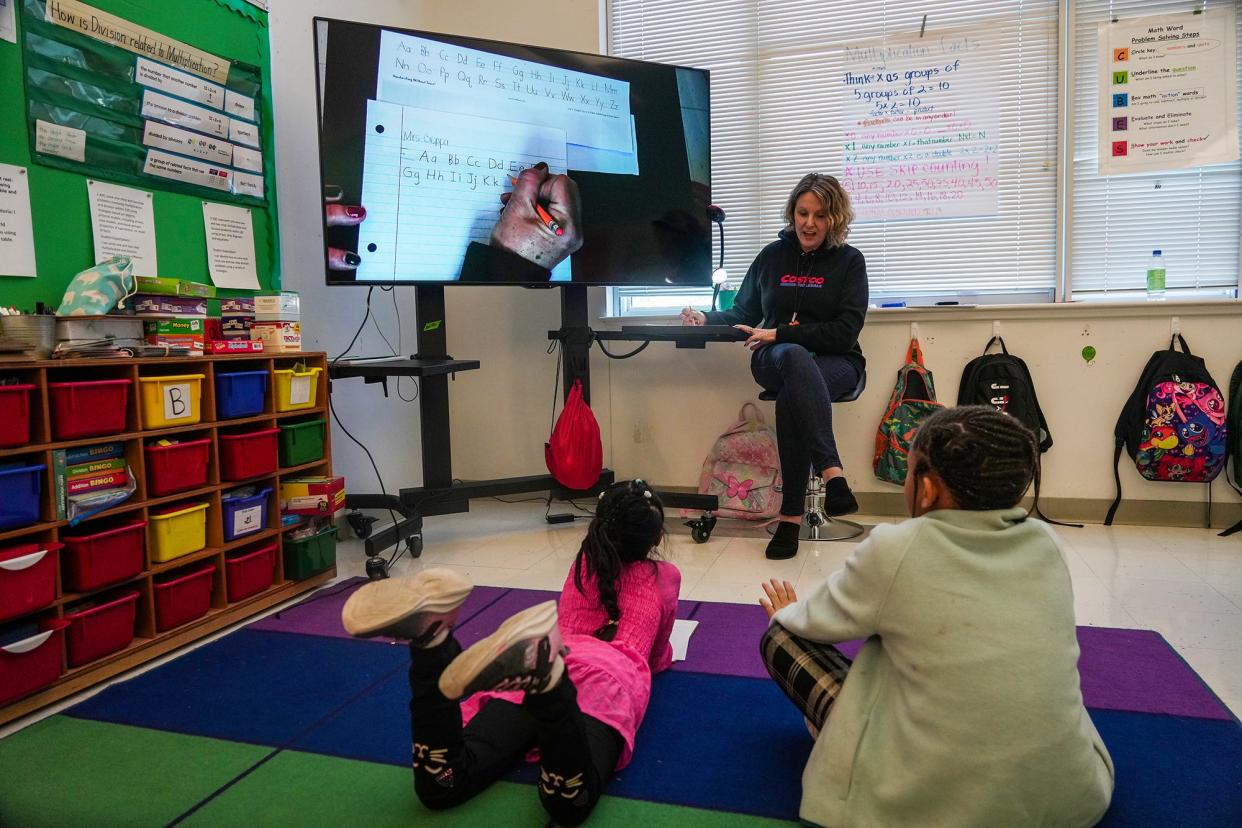Austin ISD approves $1.2 billion budget with $41 million deficit. Here's what will be cut.

The frustration was clear in some Austin school board members’ voices Thursday night when they unanimously approved a $1.2 billion budget with a $41 million deficit, which would include slashing administrative staff and hinges on Austin voters approving a property tax rate increase in November.
If voters reject a higher tax rate, the district’s deficit could balloon to $78 million, eliminating proposed salary raises for staff members and putting more cuts on the table for the 73,000-student school system.
School board members unequivocally blamed the district's financial woes on state lawmakers, who failed during the 2023 legislative session to approve any significant influx of state funding for public schools.
Board members Andrew Gonzales, David Kauffman and Noelita Lugo were absent Thursday.
The district's budget cuts include eliminating 60 staff positions, reducing third-party contract costs by $4.8 million and decreasing overtime pay by $4.1 million.
“This is a tight budget, tight to the point of putting us in pain, but this is where we are,” board Vice President Kevin Foster said.
The budget, which includes a $954 million general fund, will lower the district's property tax rate from $0.9966 per $100 valuation to $0.9287 (if voters approve that rate), according to the district. Even with a lower tax rate, homeowners could pay a higher tax bill because of increased property values.
The district's tax rate has dropped every year since 2019 as the state mandates specific ranges in which district tax rates must fall.
The district must also give the state $821 million of its $1.7 billion in expected property tax revenue due to Texas' recapture program, which takes revenue away from districts with high property values and redistributes that money to districts with lower property values.
District officials worked hard on keeping any budgets cuts out of the classroom, Chief Financial Officer Ed Ramos said. The 60 cut positions — which include vacant job openings — will come from the central office's administration, he said, though every budget reduction has some effect on students.
“It won’t be a direct impact, but will it impact some services?” Ramos said. “Potentially, yes."
"When you look at reducing contracts, campuses may have used those services,” he said.
November tax rate vote
The newly approved budget relies on district officials’ assumption that voters will approve a higher tax rate in a November election. The school board will likely call the election in August, when board members plan to formally approve the 2024-25 school year property tax rate.
The state determines a maximum tax rate every district can adopt without voter approval, but school board members can ask voters to consider raising the rate.
Without the voter-approved rate, property owners would see their tax rates drop by more than 13 cents from $0.9966 per $100 property valuation to $0.8595 next year. Instead, the district is proposing a rate of $0.9287 per $100 valuation, which would require voter approval.
The difference between the two rates is about $35 per month for the owner of an average Austin home valued at $563,000, Ramos said. The average homeowner would pay $3,879 on school district property taxes next year with the lower rate and $4,301 with the higher rate, according to district data.
District staff pay raises
A $17.3 million staff compensation package the board approved Thursday is also contingent on voters approving the higher tax rate. This step is necessary because the Legislature didn’t approved a significant increase to per-student funding despite higher inflationary costs, said Ken Zarifis, president of Education Austin, the district employees union.
“If the state’s not going to do it, we’ve got to do it,” Zarifis said. “This is not the budget you dream of, but this is the right budget for the moment.”
Despite bipartisan legislative support for public school funding increases, those proposals died during the 2023 legislative session over political fights on a school voucher program.
Gov. Greg Abbott threw his weight behind vouchers, a program that would use state money to pay for children's private school tuition. The measure pitted Texas House Republicans against one another, and the proposal — along with public school funding attached to it — died. Abbott said he would not sign off on increases to public school funding unless the Legislature approved school vouchers.
Future challenges
More financial strain could be in the future for the Austin district.
Even if voters approve the higher tax rate, the district projects continued deficits through at least the 2027-28 school year.
“We’re going to be watching the 2025 legislative session very carefully,” Ramos said.
In preparation for the 2025-26 budget year, district officials plan to use the summer and fall to find additional places to cut in case next year’s budget brings another deficit.
District officials hope to identify $78 million they could slash from the budget for the 2025-26 school year and are considering larger class sizes and changes to software to save on expenses.
This article originally appeared on Austin American-Statesman: Austin ISD's $1.2 billion budget counts on voter-approved tax rate

